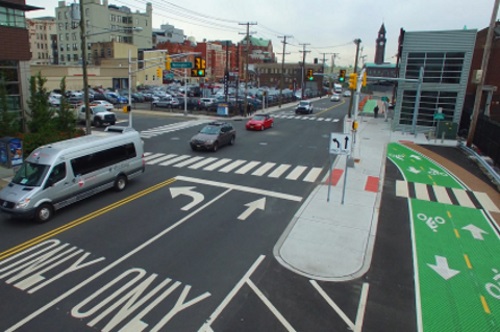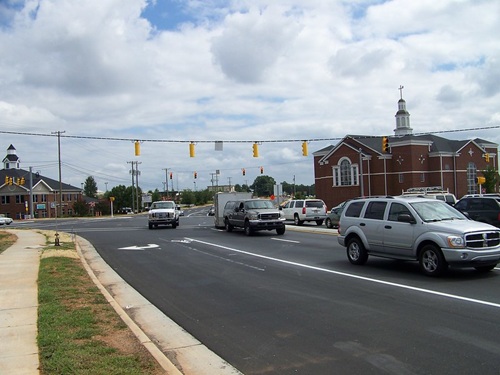The 2020 Joint Policy Conference hosted by the American Association of State Highway and Transportation Officials highlighted how COVID-19 presents “unprecedented challenges” to transportation planning and operations during a three-day virtual meeting September 29-October 1.
[Above photo by the New Jersey DOT.]
That mobility analytics session on September 30 – hosted by Piyushimita Thakuriah, Ph.D., dean of the Bloustein School of Planning and Public Policy at Rutgers University – showed data analytics and visualization can help planners cope with the impact of travel from COVID-19 and better integrate the transportation planning process.
“Big data has taken on new meaning and dimensions in the COVID-19 era,” she explained. “We are living in a world of data and analytics – we generate it everywhere we go [because] sensors are embedded in infrastructure, smart buildings, and wearable devices. That data impacts the way we shop, travel, and live.”

When it comes to transportation, Thakuriah noted that travelers provide data through via transit systems, toll roads, and other avenues. “Every time we go into an airport, information is collected about us,” she added. “As a result, the business community has all kinds of information on us – and that is before we add in the world of socially-generated data, with its enormous user-generated content.”
Yet Thakuriah emphasized that this vast trove of personal transportation information can be critical to combating future pandemics.
“The initial big hotspots for COVID were the airport hubs – the airlines were dropping big groups of infected people there. Over time, they diffused into the ground transportation network,” she explained. “So now we need a conversation in how transportation agencies can help stop spread of disease/pandemics by tapping into travel data, the find out how people are moving around.”
There is an economic component to this as well, Thakuriah noted.

“The economic crisis associated with the public health crisis is likely to have long-term – and geographically and economically disparate effects – as was the case with the Great Recession,” she pointed out. “For example, travel dropped dramatically – by up to 80 percent in some parts of New Jersey – due to COVID-19 stay-at-home orders. Yet by April 12, we began to see a gradual uptick and travel is now returning to near normal.”
However, Thakuriah’s research team found that travel patterns changed due to COVID, even as they returned to near-normal levels.
“When people traveled, the median distances were very small with a very small amount of dwell time – shorter distances and shorter amount of time to reduce COVID exposure,” she said. “The key takeaway here is that such new travel patterns present a more complex multidimensional challenge for our transportation systems. It is not a normal time in our world and there is still so much we don’t know. But deeper analysis of travel data should help us figure them out.”
 Top Stories
Top Stories


